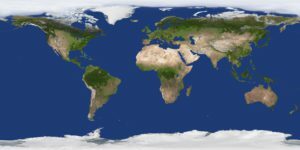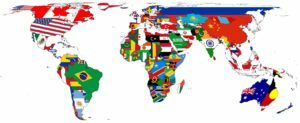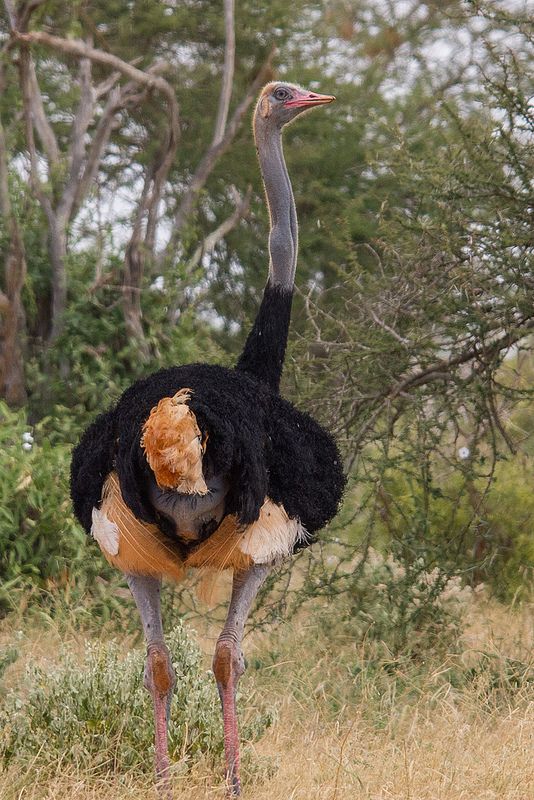Number of countries in the world
It appears to be a simple question to respond to. However, this is not the case. A simple question like “How many countries are there in the world?” at your trivia night, this question will spark a lot of conversation or astonishment.
The answer might be 193, 195, 207, or even 327, depending on who you ask.

The world is divided into 195 countries according to the United Nations.
A sovereign state or country has its governance and borders, as defined by the United Nations. Furthermore, the world is home to 193 countries, plus two observer states, according to the United Nations (Palestine and Vatican City).
There are 195 countries in the world.
The newest country added to the list is South Sudan (since 2011).
Countries with at least partial recognition around the world – 201.
To become a United Nations-recognized country, it must be recognised as such by all UN member states. As a result, several countries do not recognise one another. Additionally, It is the subject of a heated debate over the correct answer to the question of how many countries exist on the planet.
Kosovo, Taiwan, Western Sahara, South Ossetia, Abkhazia, and Northern Cyprus are just a few examples (disputed by Greece).
Countries of the world including self-declared states – 205.
We must also consider countries that have declared their independence. These countries have no international recognition, and their claims to sovereignty are frequently contested from the start.
Somaliland, for example, has declared independence from Somalia. They have their flag, currency, and passports. Artsakh declared independence from Azerbaijan, while Transnistria declared independence from Moldova.
The Sovereign Military Order of Malta, a tiny nation with its capital in Rome, comes in last.
The Olympic Committee recognises 206 countries around the world.
If you are a sports fan, or at the very least an Olympic fan, the countries participating in these events may appear to be an obvious choice.
To qualify, you do not have to be a fully recognised country, which is why the following countries are on the list: Palestine, Kosovo, Taiwan, and dependent territories such as Porto Rico in the United States of America, the Cook Islands in New Zealand, Bermuda, American Samoa, and Aruba.
According to the Travellers Century Club, there are 327 countries in the world.
Is it true that the world has 327 countries? Doesn’t that appear to be a lot? And this is not the case, according to the Travellers Century Club’s list.
Even if some are not independent countries, they are included because they are geographically separated from the parent country. Furthermore, travellers have debated the list of countries since their wanderlust led them to tour the world. Also, It’s easy to see why.
When you visit Scotland, do you get the impression that you’re in the United Kingdom? Are Alaska and Hawaii US states? Is Denmark part of Greenland? Isn’t Ibiza in Spain?
Largest Countries in the World
- Russia has the most land area of any country on the planet, accounting for 11% of total land mass.
- China is larger than the 50 states of the United States of America. When all of the United States’ territories are considered, however, it is smaller than the United States.
- Despite its low population density, Canada is the world’s second largest country.
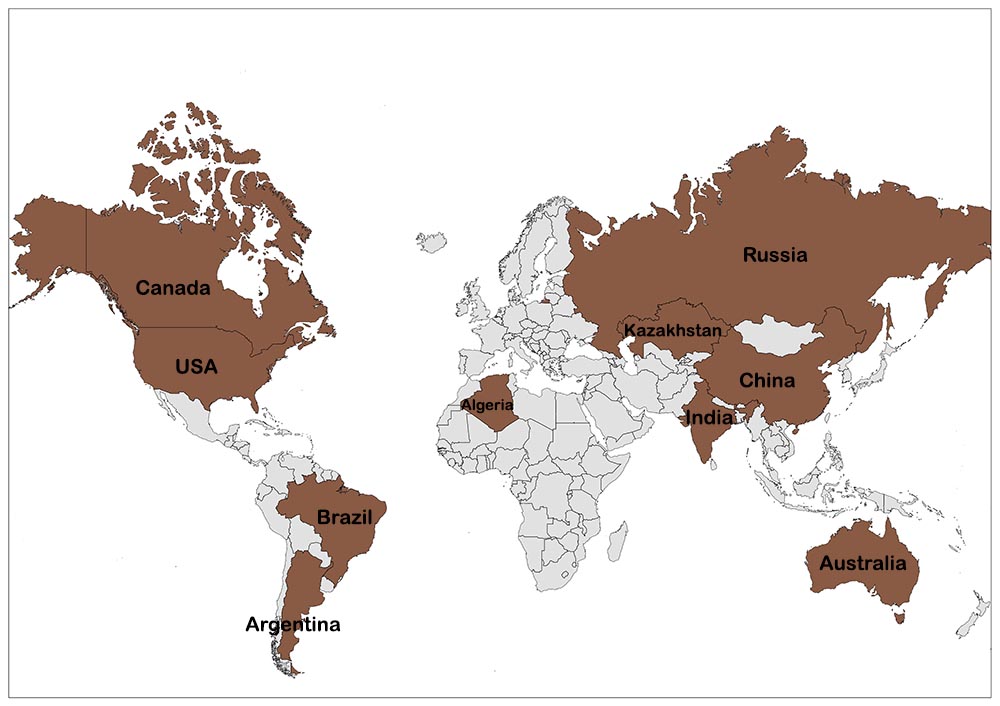
The world’s largest countries, from Cape Horn to the Arctic Circle, offer a beautiful depiction of the planet’s unique landscape, temperature, and wildlife.
As we travel across the world’s greatest nations, we visit five continents, some of the most stunning landscapes on the planet, and every type of climate imaginable. Furthermore, all of the world’s major countries have rainforests and tundra, mountains and valleys, coastal and desert ecosystems.
It’s also exciting because it’s always changing: history has shown that geopolitical boundaries shift dramatically over time. Also, who knows which countries will overtake the US as the world’s largest in the next decades?
When one country claims 11.5 per cent of the world’s area, it’s no surprise that the tenth largest (Algeria) could fit seven times into the largest (Russia). The world’s ten largest countries account for 49 per cent of the planet’s total surface area of 149 million square kilometres when added together.
The Ten Most Powerful Nations (By Total Area)
| 1. | Russia | 17,098,242 sq. km |
| 2. | Canada | 9,984,670 sq. km |
| 3. | United States | 9,833,517 sq. km |
| 4. | China | 9,596,960 sq. km |
| 5. | Brazil | 8,515,770 sq. km |
| 6. | Australia | 7,741,220 sq. km |
| 7. | India | 3,287,263 sq. km |
| 8. | Argentina | 2,780,400 sq. km |
| 9. | Kazakhstan | 2,724,900 sq. km |
| 10. | Algeria | 2,381,741 sq. km |
However, when we give rank to the countries solely based on land area, the rankings change. Canada, for example, has the highest number of lakes count, but when the area of the country covered by water bodies is subtracted from its overall size, it ranks fourth, trailing only China and the United States.
The population of a city and its size have nothing to do with each other.
Another intriguing discovery is that the world’s largest countries are not always the most populous. Despite their larger landmasses, countries such as Russia and Canada limit human occupancy over large areas of their respective territories due to temperature and topographical extremes. Furthermore, China, India, and the United States, the world’s three most populous countries, ranked fourth, third, and seventh on the list above, respectively.
Russia: 17,098,242 Sq.Km

With 17.1 million square kilometres, Russia is the world’s largest country by area. Russia would still be the largest if it cut 7 million square kilometres off its entire territory—and the shaved-off region would rank eighth in the globe! It makes up 11% of the world’s total landmass.
Russia, like China, is a transcontinental country that extends from Asia to Europe and shares borders with 16 other countries. It has a total of nine different time zones! Despite being the world’s largest country, Russia has a very small population, accounting for only about 2% of the total.
Russia’s history can be traced back to the 9th century Kievan Rus, which flourished under the authority of Viking chieftain Rurik. Another notable territorial expansion occurred in the late 16th century during the reign of Ivan the Terrible, Russia’s first formal tsar. By the early 18th century, Russia had become the world’s third-largest empire, and it was the largest part of the Soviet Union when it was founded. The Russian Federation, or Russia as we know it today, was formed following the fall of the Soviet Union on December 25, 1991.
Canada: 9,984,670 sq. km
Canada is the world’s second-largest country after Russia. According to the Canada FAQ, the country spans 3.8 million square miles (9.9 million square kilometres), implying that the United Kingdom could fit into Canada 40 times.
Also, Canada is encircled by three oceans: the Pacific, Atlantic, and Arctic, and its breathtaking coastline run for 151,473 miles. The Pacific coast is a popular route for trips to Canada and Alaska.
Canada is the country with the highest number of lakes g in the world. Most importantly Canada has 31,752 lakes larger than three square kilometres.
More than half of the world’s natural lakes are found in Canada, which accounts for 9% of the country’s land area. Canada would be smaller than the United States if it did not have its lakes.
Lake Superior is the world’s second-largest body of water (as well as the largest in Canada). Likewise, Great Bear Lake is Canada’s largest lake entirely within its borders (12,028 square miles).
United States Of America – 9,833,517 Sq.Km
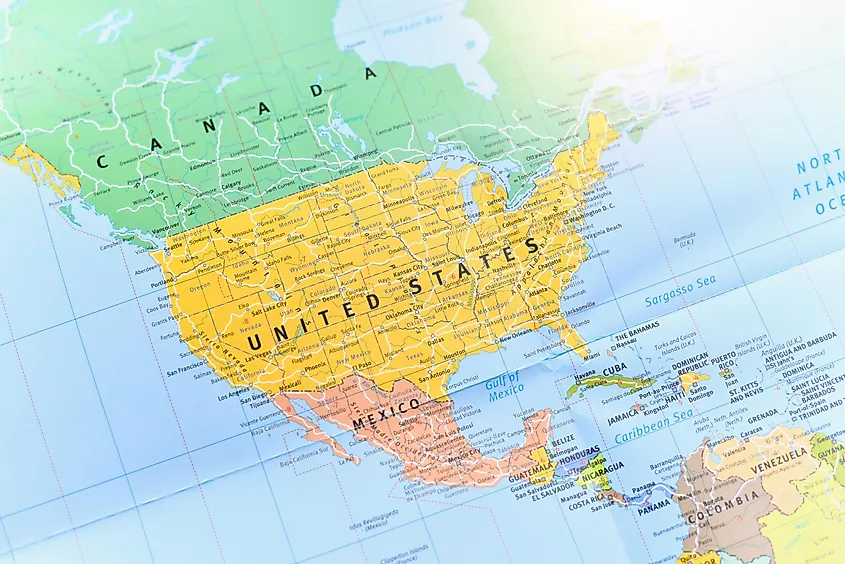
The United States ranks third on the list, with a total area of 9.83 million square kilometres. Furthermore, the contiguous states plus the District of Columbia cover 83.65% of the total land area in the United States. The remainder lies with Alaska, Hawaii, and US territories in the Pacific. in addition the country’s geographical borders are shared by only two countries: Canada to the north and Mexico to the south. Moreover, with a total length of 19,924 kilometres, the country ranks eighth in the world in terms of coastline length.
The United States is the third most populous country, but it lags far behind China and India, both of which have populations of over one billion people. The population of the United States is estimated to be over 330 million people.
People’s Republic Of China – 9,596,960 Sq.Km
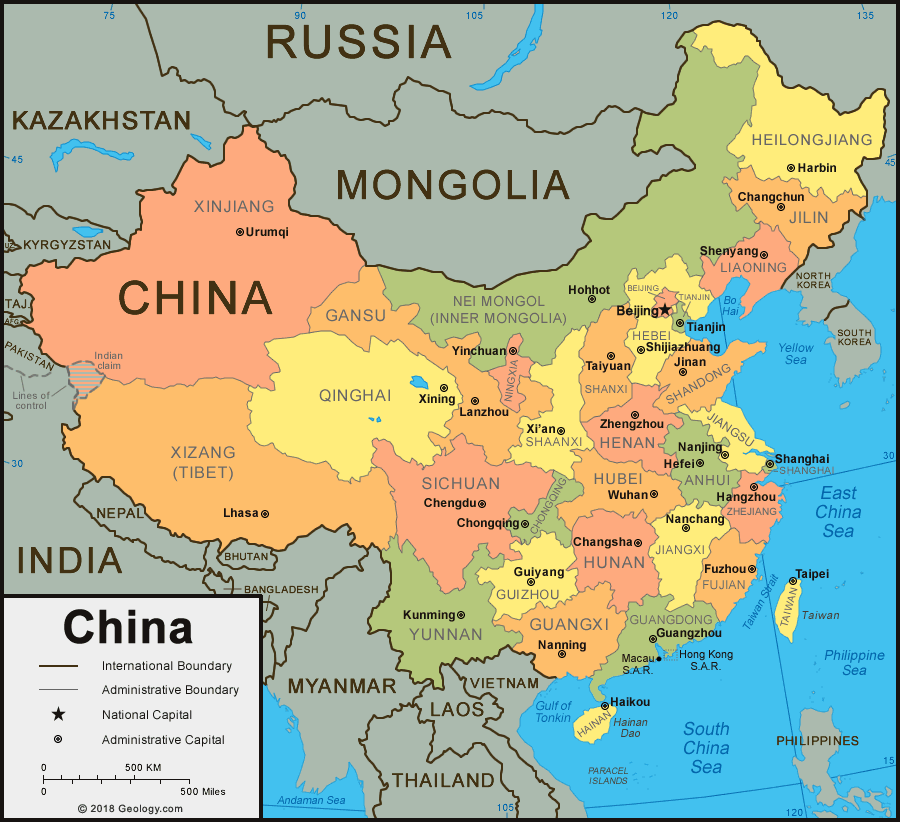
China is an East Asian country with a total land area of 9,596,960 km2 (3,705,410 sq mi). Border disputes, such as those involving Taiwan, Aksai Chin, the Trans-Karakoram Tract, the South China Sea Islands, the Senkaku Islands, and South Tibet, can frequently make determining the precise size of the land region difficult.
When China reclaimed sovereignty over Hong Kong and Macau in 1997 and 1999, the One Country, Two Systems policy established two special administrative regions. Additionally, China is the world’s third or fourth-largest country, depending on how the area of the United States is measured.
Also, China possesses a diverse set of physical characteristics. Furthermore, the country’s eastern plains and southern beaches have rich lowlands and slopes. And most importantly they are home to the majority of China’s agricultural output as well as the majority of the country’s human population.
The country’s southern regions are dominated by hilly and rugged terrain (south of the Yangtze River). The country’s west and north are dominated by sunken basins (such as the Gobi and the Taklamakan), rolling plateaus, and towering massifs. It is home to a portion of the Tibetan Plateau, the world’s highest plateau, but it has far less agricultural potential and population.
Brazil – 8,515,770 Sq.Km
Brazil is a South American republic that spans half of the continent. Also, we call it the Federative Republic of Brazil or Repblica Federativa do Brasil in Portuguese. Despite having a larger land area than the 48 contiguous states of the United States, it is the world’s fifth-largest country, trailing only Russia, Canada, China, and the United States. Uniquely, Uruguay to the south; Argentina, Paraguay, and Bolivia to the southwest; Peru to the west; Colombia to the northwest; and Venezuela, Guyana, Suriname, and French Guiana to the north—Likewise, all South American countries share inland borders with Brazil, except for Chile and Ecuador.
Brazil is a large irregular triangle that stretches 2,700 miles (4,350 kilometres) north to south and east to west, encompassing a diverse range of tropical and subtropical environments such as wetlands, savannas, plateaus, and low mountains.
Australia – 7,741,220 Sq.Km
With 7.74 million square kilometres of land area, Australia is the world’s sixth-largest country. Additionally, the 4.4 million square kilometre difference between Australia and India is the second-largest among countries consistently ranked in the top ten. Furthermore, Australia dwarfs India by more than a factor of two.
It is by far Oceania’s largest country. It is so large that it is considered a continent rather than an island. Additionally, the Australian Outback is one of the world’s driest and hottest regions, which explains why the vast majority of its residents live in coastal cities such as Sydney in the east and Perth in the west.
India – 3,287,263 Sq.Km
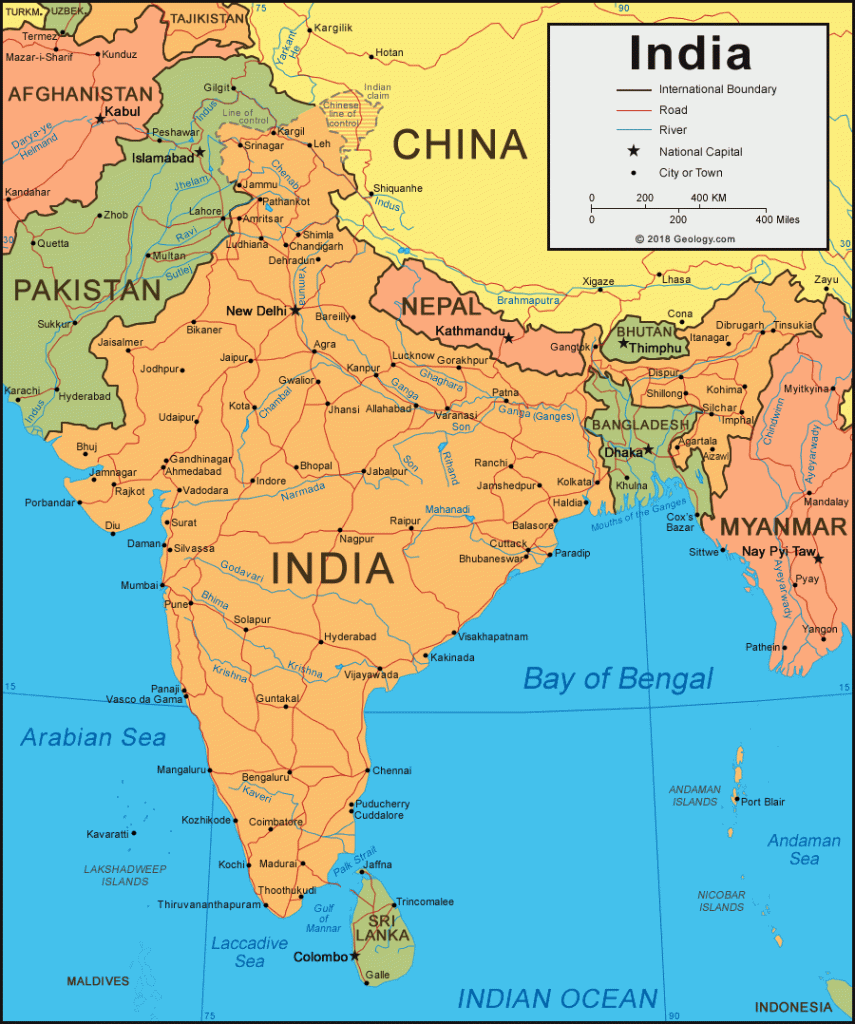
India, the world’s seventh-largest country, is situated in South Asia and spans 3.28 million square kilometres. Moreover, The country has a 15,000-kilometer land border and a 7,516.6-kilometer coastline. In addition, It has seven countries on its land borders.
India ranks second on the list of the world’s most populous countries, despite being sixth on this list. Furthermore, With a population of over 1.3 billion people, India is expected to overtake China as the world’s most populous country by 2027.
Argentina: 2,780,400 Sq.Km
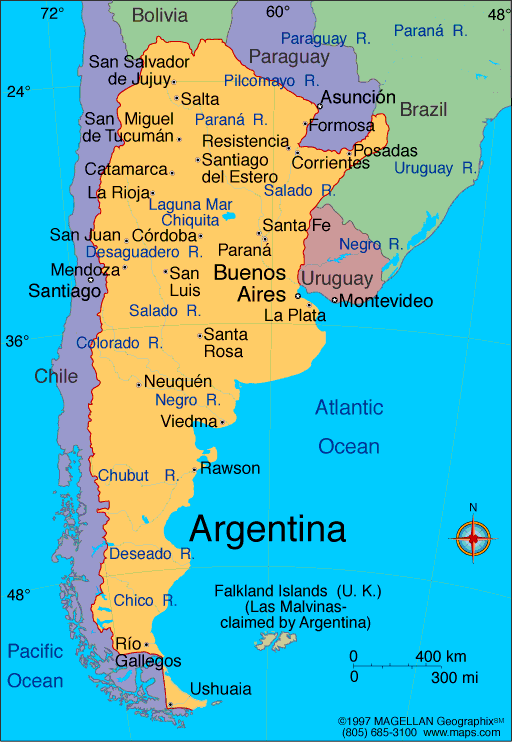
Argentina, the world’s 32nd most populous country, is the world’s eighth-largest country by area and the world’s largest Spanish-speaking nation. Also, It shares its borders with five other countries. Furthermore, Its 2.78 million square kilometres contain some of the world’s most diverse geology and climate.
Kazakhstan – 2,724,900 Sq.Km
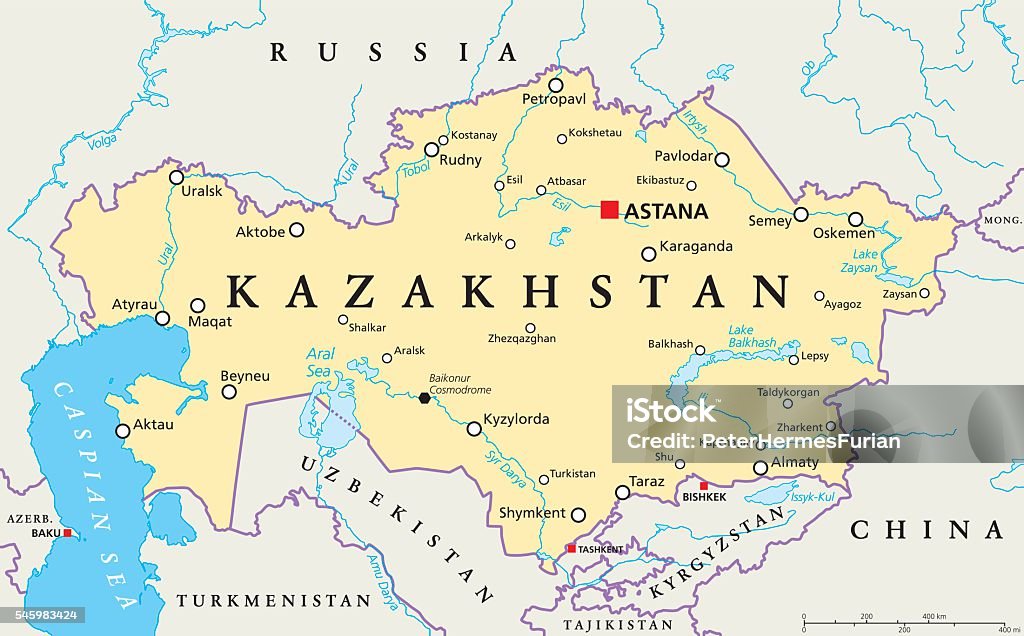
Kazakhstan is a transcontinental country in Central Asia and Eastern Europe with a total area of 2,72 million square kilometres. Moreover, Kazakhstan’s present claim to fame is that it is the world’s largest landlocked country—and the only landlocked country in the top ten. Kazakhstan was once part of the Soviet Union, which was the world’s largest nation for much of the twentieth century. five nations surround Kazakhstan.
Algeria – 2,381,741 Sq.Km
Algeria is the only African country on this list of the world’s ten largest countries, with an area of 2.38 square kilometres in the Maghreb region of North Africa. Six countries surround it, as well as the disputed territory of Western Sahara. Furthermore, the Sahara Desert covers the majority of the country’s southern region.
Largest Continent
This is a difficult area to judge because the world’s largest country, Russia, borders two continents (or not, depending on which model of the continents you follow). Also, “Asian” Russia would remain Asia’s largest country. Greenland, which is nominally ruled by Iceland, is likewise debatable. Here are the largest countries wholly within each continent, using the Seven Continents paradigm used in the United States:
Algeria, the Democratic Republic of the Congo, Sudan, Libya, Chad, Niger, Angola, Mali, South Africa, and Ethiopia are all located in Africa.
Likewise, China, India, Kazakhstan, Saudi Arabia, Indonesia, Iran, Mongolia, Pakistan, Afghanistan, and Yemen are among the Asian countries.
And Turkey, France, Ukraine, Spain, Sweden, Germany, Finland, Norway, Poland, and Italy are all located in Europe.
Furthermore, Canada, the United States, Greenland*, Mexico, Nicaragua, Honduras, Cuba, Guatemala, Panama, and Costa Rica are all in North America.
Below is a list of the largest countries wholly within each continent:
Australia, Papua New Guinea, and New Zealand are all part of Oceania.
Likewise, Brazil, Argentina, Peru, Colombia, Bolivia, Venezuela, Chile, Paraguay, Guyana, and Uruguay are all in South America.
(Antarctica, on the other hand, has no countries.) Also, It would be the second-largest country after Russia if it were a country.)
How do we determine size?
The entire area of a country includes its landmass as well as a marine region stretching out to (or beyond) its continental shelf. Moreover, different countries use different methods to calculate their oceanic area, which might lead to some inconsistency in the rankings. Some could argue that we should only measure a country’s land area, thus we’ve gone with the official areas stated in the CIA World Factbook. The ranks would shift slightly in that case. China would be the second-largest country, followed by the United States and finally Canada.
How do we represent size?
Many folks recall the West Wing episode where they discussed map projections. True, the Mercator projection offers a deceptive picture of the size of various countries; to fit a 3D globe onto a flat plane, places near the poles are stretched out and rendered larger. In actuality, however, Russia, Canada, and the United States are all very large countries. Since the United States incorporated Alaska in the 1900s, these three have held the top three rankings, in that order.
Recent modifications
Russia has performance through the development area in a remarkable departure from the norm, as national borders have remained fairly constant for decades (if one includes Crimea in the count).In addition, Crimea would swell Russia’s already massive size by another 27,000 square kilometres.
In addition, here is the list of countries and capitals with currency and Language.
instaPDF.in-list-of-countries-and-capitals-with-language-287-1 – Download
FAQs
Q.1 What are the top 3 biggest countries?
List of countries (and dependencies) ranked by area
| # | Country | Tot. Area (Km²) |
|---|---|---|
| 1 | Russia | 17,098,242 |
| 2 | Canada | 9,984,670 |
| 3 | China | 9,706,961 |
Q.2 What is the biggest country in the world?
With a total area of about 17 million square kilometres, Russia is by far the largest country. Despite its vast size, Russia, which is presently the world’s largest country, has a comparatively tiny total population. Its population, however, is still quite considerable in contrast to that of other countries.
Q.3 What are the 10 biggest countries in the world?
- Russia — 17,098,250 km²
- Canada — 9,879,750 km²
- China — 9,600,013 km²
- United States — 9,525,067 – 9,831,510 km²
- Brazil — 8,515,770 km²
- Australia — 7,741,220 km²
- India — 3,287,260 km²
- Argentina — 2,780,400 km²
- Kazakhstan — 2,724,902 km²
- Algeria — 2,381,741 km²
Q.4 What is the 7th largest country in the world?
India: India is the seventh-largest country in the world. Moreover, the area covered by the country is 3,166,391 square kilometres. New Delhi is the capital city of India.
Q.5 What country is bigger China or USA?
The United States is around the same size as China.
China is approximately 9,596,960 sq km, while the United States is approximately 9,833,517 sq km, making the United States 2% larger than China. Meanwhile, the population of China is ~1.4 billion people (1.1 billion fewer people live in the United States).
Q.6 Which is the smallest country?
Vatican City: Based on the landmass, Vatican City is the smallest country in the world, measuring just 0.2 square miles, almost 120 times smaller than the island of Manhattan. Situated on the western bank of the Tiber River, Vatican City’s 2-mile border is landlocked by Italy.
Q.7 Who is more powerful Russia and China?
China overtakes Russia to be seen as the second-most powerful country. Furthermore, both countries are among the world’s top military spenders.
Q.8 How many countries are in the world?
195 countries there are 195 countries in the world today. Most importantly this total comprises 193 countries that are member states of the United Nations and 2 countries that are non-member observer states the Holy See and the State of Palestine.
Q.10 How big is China compared to the United States?
The United States occupies a total area of about 3.8 million square miles while China has an area of approximately a 3.7million square miles. However, China has a bigger land area than the United States. Furthermore, the Chinese land area is about 2.2% bigger than the United States (3.5 million square miles).
Share with your friends
